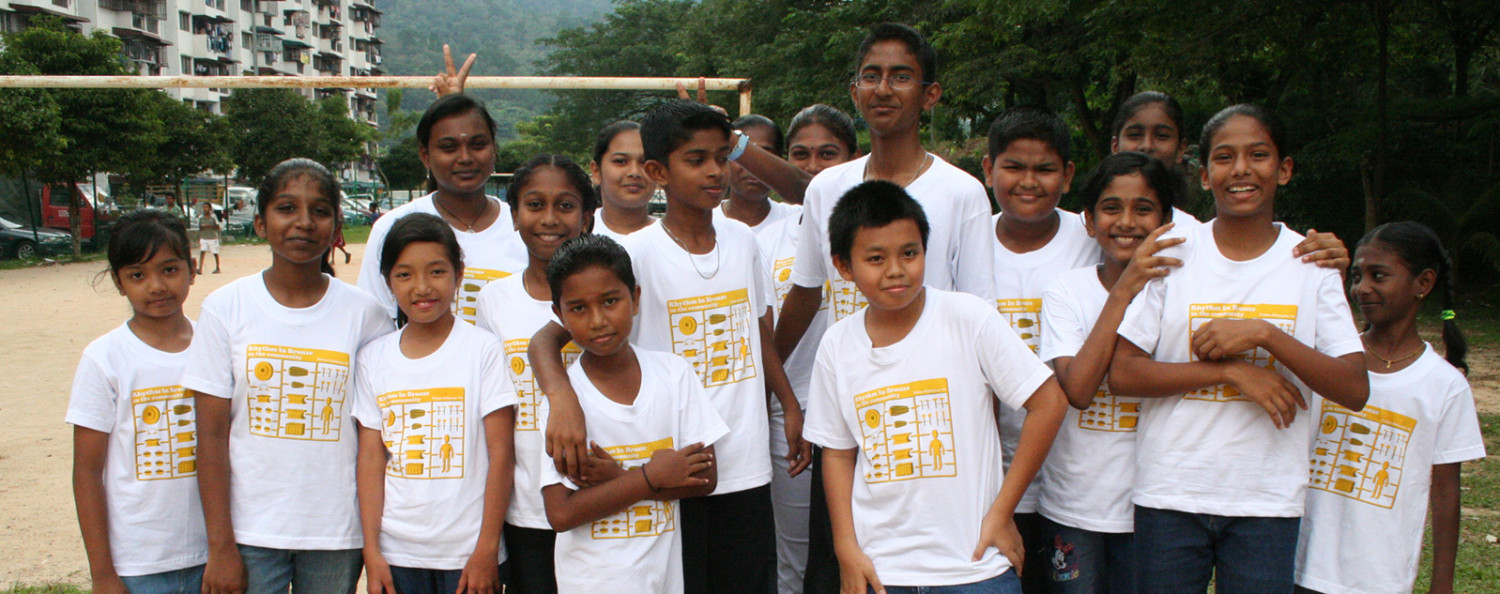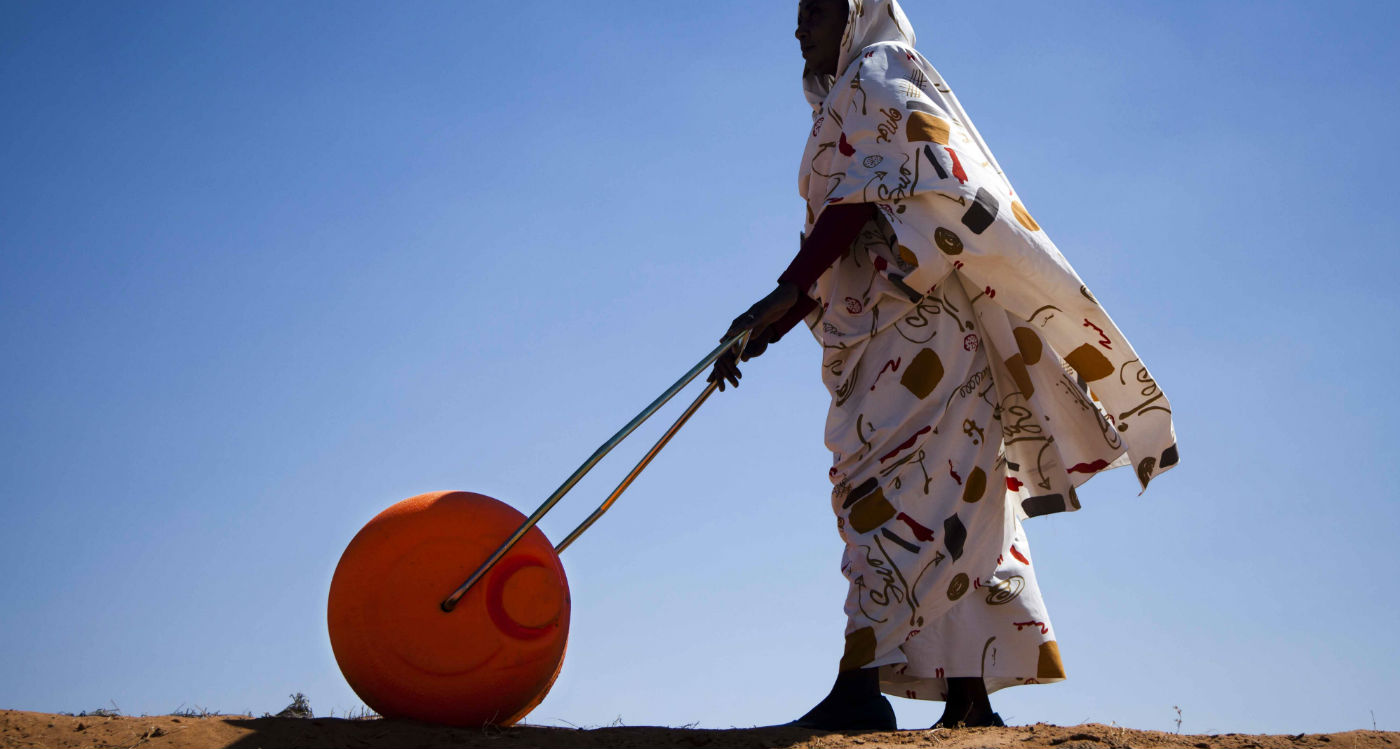Earlier this week, a post about a rolling water carrier had been making its rounds on Facebook. Intrigued, I decided to look it up.
Designed by South Africans, Pettie Petzer and Johan Jonker, the Hippo Water Roller project came out after watching women and children in developing countries relying on traditional methods of water collection which consumes excessive amount of energy and time. It is estimated that globally, women and children spent 140 million hours collecting fresh water every day, in a population of 750 million people around the world lacking the access to clean water. In these countries:
- Water is traditionally carried in heavy 20 Litre buckets balanced on their head
- Water collection points are often located far away from their homes: 2 – 10 km
- This time consuming task requiring multiple trips per day: 3 – 9 hours
- Carrying water is strenuous causing long-term neck and spinal injuries
With the invention of Hippo Water Roller, a few issues are addressed and solved:
- It reduces the suffering and long-term injuries caused by carrying heavy loads
- Improves hygiene and health resulting in higher energy and morale levels
- More time attending school for better education opportunities
- More time for economic activities to break free of poverty e.g. vegetable gardens
- The elderly no longer have to rely on their neighbours’ goodwill to get water
- A positive cultural change is that men are proud to use this technology and now help to collect water
Hippo Water Roller is one of the few examples of designing for social good, or aptly termed Social Innovation Design – aimed to work for the public good. Unlike consumerism where it focuses on growing the economy, driving more and more consumption and sales, social innovation design focuses on society’s most important challenges and problems: climate change, access to clean water (as demonstrated by Hippo Water Roller here), sanitation, pollution, poverty, malnutrition, female empowerment, social justice, fair trade, education and community revitalisation, among others.
Why do we design for social impact?
Social innovation design has to start from drilling into the problem of the people of the community. This is where in fact, designers do have the advantages.
In this article from The Guardian, “Unlike their engineering cousins working extensively from technology or science, designers start from people. It’s historically been termed empathic design, user, human or people-centred design, and it’s been interesting to hear recent calls for a overhaul of terminology within the design industry, from “human-centred design” to “humanity-centred design”, which does rather hit the spot.”
“… this is why designers tend to gravitate toward the social rather than environmental problems of sustainability, as it’s a natural fit for their skills requiring no retraining.”
Recognising that this is an emerging discipline that works at a systems level, having the ability to shift cultures, ignite collective creativity, and realise the kind of transformational opportunities for business and society that we need most right now, more and more universities have also been offering social innovation courses. Universities such as University of Oxford, Social of Visual Arts, University of Northampton and the LSE are ready to prepare the designers and those interested in the design processes to be equipped for this evolution.
Notable examples of social innovation design initiatives

We could not speak about social innovation design without mentioning IDEO.
Using design thinking to address issues such as poverty, nutrition, health, water and sanitation, economic empowerment, access to financial services, and gender equity, IDEO’s projects involve clients in both the private and public sectors, helping to to develop not only effective solutions, products and services, but also the entire system that supports them.
Some key projects include the Universal Ear to aid with hearing loss, In-Home Sanitation Solutions as a collaborative R&D effort for portable toilet and collection service in Ghana and Donor Engagement for American Refugee Community (ARC), providing a better and transformational donor experiences for the international NGO.
Studio H is an innovative shop class engineered to help teach rural high school kids how to rebuild their withering community, and their own sense of possibility, through design. In 2010, designer-activists Emily Pilloton and Matthew Miller moved to the poorest county in North Carolina, teaching the students how to engineer, prototype, and build everything from a chicken coop to the 2,000-square-foot Windsor Super Market, a covered farmer’s market intended to help jump-start the local economy and foster a sense of community.
A new documentary was produced out of this initiative, called If You Build It, which chronicles the ups and downs of the yearlong building project. Directed by Patrick Creadon (Wordplay, I.O.U.S.A.), the movie is a heartening story about the power of design to galvanise young people in a school where physical education classes are taught online and kids can’t wait to grow up and get out of town. And it’s an equally disheartening tale of the narrow-minded adults at the local school board who withdrew financial support for the program after the departure of the superintendent who had initiated it. Wanting to expand the idea to others, Pilloton also has assembled an online toolbox of lesson plans, activities, project briefs, and resources to help share the core ideas of the program with others.

Malaysia’s very own Social Innovation Lab, launched on November 2012, was created with the aim to enable “Inclusive Innovations,” innovations that benefit the poor and underprivileged.
“It concerns me that, as a society, we are spending too much time innovating Facebook and too little time innovating the way children learn,” said Kal Joffres, director at the Social Innovation Lab.
The Social Innovation Lab is similar to an incubator for innovative projects with a social impact. However, unlike most incubators which provide space, the Social Innovation Lab will work with social innovators to build the technology that powers their enterprises for social good. Collaborators for projects at the Social Innovation Lab include Tandemic, Teach for Malaysia, the Social Enterprise Alliance, Yayasan Inovasi Malaysia, Taylor’s Business School, Edunation, and SOLS 24/7.
Credits:
 Stampede Design
Stampede Design

Thank you for including the Hippo Water Roller in your very interesting and appropriate article. In my experience, I come across too many designs that do not consider the environmental dynamics affecting the very people that the design is meant to assist.
Hi Grant, thank you so much for the kind words! We are so grateful for inventions that do good for the world, including Hippo Water Roller, and we thank you for that too. Keep up doing meaningful work!